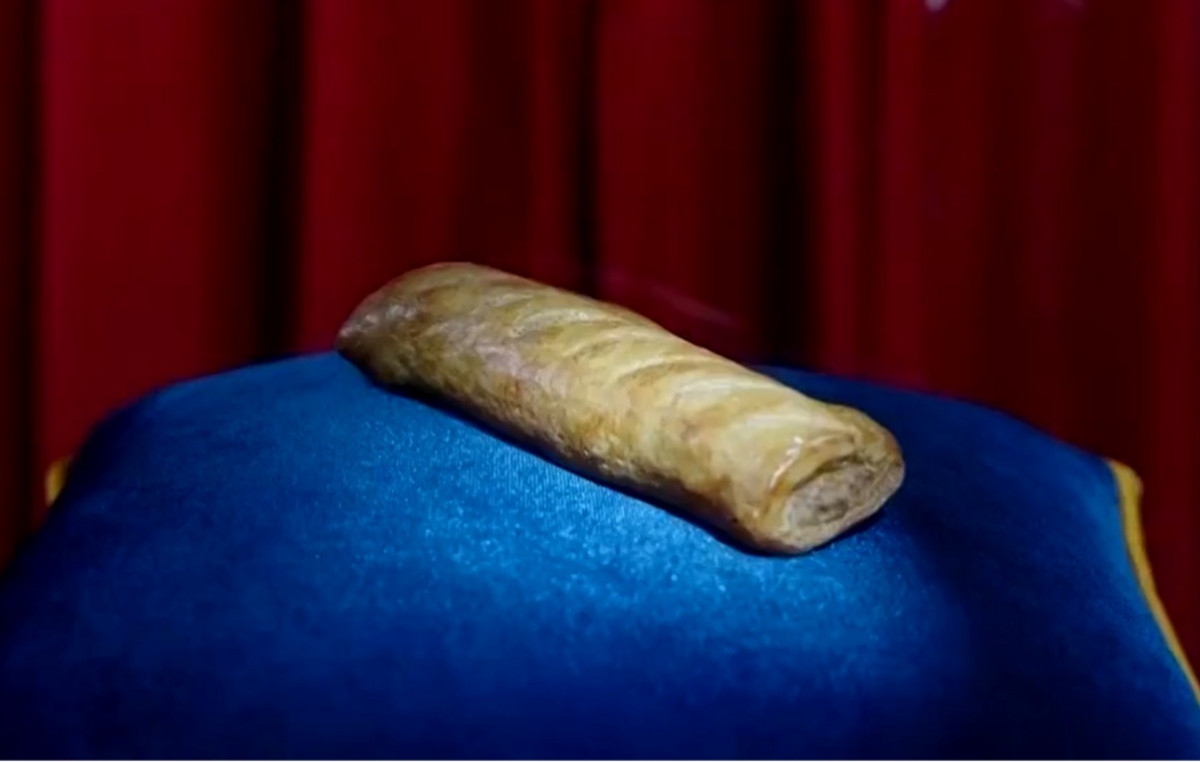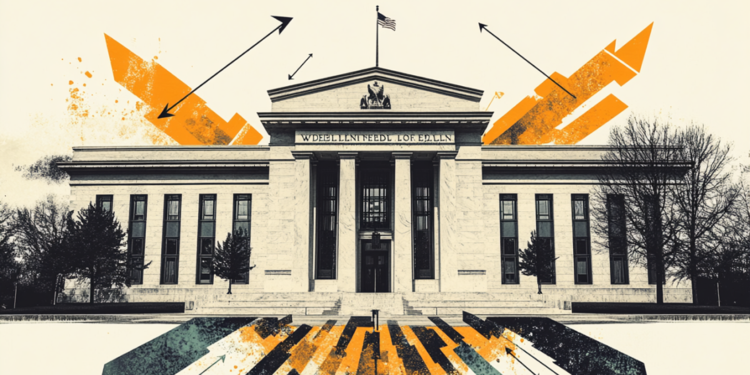Across Ukraine, in the scorching heat, a sight is becoming familiar this Northern Hemisphere summer: combine harvesters sweeping grain fields in a race against rapidly spreading fires.
The front lines of the conflict encompass some of Ukraine’s richest farmland. Caused by accident or intention, the fires that darken the summer sky are consuming a crop that would always be difficult to harvest and even more difficult to export.
Pavlo Serhienko is in the crosshairs of this battle. The 24-year-old is the third generation of his family to run a farm in the Vasylivka district of Zaporizhzhia. Since his father died of Covid-19, Serhienko has been managing the 3,000-hectare farm on his own.
But nearly half the land is now too dangerous to farm, he told CNN on Saturday (9).
“We can’t even get there. Either it is mined or close to the occupied territories, literally on the front lines. We had squatters in part of the camps.”
Serhienko literally watched his family’s business go up in smoke.
“For the past four days our knees are covered in blood, we are extinguishing [incêndios] in the fields. They [os russos] especially hit the fields – with wheat and barley – every day.”
He said that in recent days he had lost 30 hectares of wheat and 55 hectares of barley. And “these 1,200 hectares that I cannot reach are also burning. But what can I do? I’m not even going there.”
The sowing season was just as dangerous. “We sowed a field of 40 hectares. We had to leave the field four times to finish it. Every time we went out they bombed the place instantly. Once there were 23 mortar rounds.”
Buildings and equipment were also hit – the animal farm and all the warehouses built in the last 20 years were destroyed.
“The planter was crushed, the winter workshop, where we repair tractors and harvesters, was also crushed.”
There are hundreds of farmers in a similar situation. Many are likely to face bankruptcy.

Targeted aggression
Ukrainian officials have no doubt that part of Russia’s strategy is to destroy Ukraine’s agricultural wealth.
Last week, police in the South Kherson region, one of Ukraine’s most productive agricultural areas, opened a criminal case for the “purposeful destruction” of crops by the Russian military.
Police accused Russian forces of “bombing farmland with firebombs. Large-scale fires occur every day, hundreds of hectares of wheat, barley and other grains have already been burned.”
“To save at least part of the harvest, locals work on machines next to a wall of fire,” police said.
Once fires start, there is little chance of extinguishing them. Many contested areas do not have running water, and it is often very dangerous to try to fight the flames.
Kherson police allege that “the Russians deliberately do not allow anyone to put out the fires”, citing an event that burned 12 hectares and adjacent pine forests in the occupied area around the village of Rozlyv.
The front lines active in the conflict extend over 1,000 kilometers – mostly through farmland. In the Donetsk region, Pavlo Kyrylenko, head of the regional military administration, said that “the enemy has begun to use the tactic of destroying the fields where the harvest is in progress.”
Ukrainian emergency services published footage of fires that swept through Donetsk’s farmland last week.
Ihor Lutsenko, a former member of Parliament and now in the army, posted an image showing a substantial fire south of Bakhmut, an area of Donetsk that is under almost constant attack.
“The fields are on fire here,” Lutsenko told CNN last week. “We witnessed the Russians launch incendiary munitions. This is to burn our positions.”
The image was republished by the Defense Ministry, which added: “It is not Ukrainian wheat that is on fire, it is the world’s food security that is on fire.”
A little further west, the city council of Kramatorsk – an area that is under increasing Russian fire – also posted images of scorched fields, some with the remains of Russian rockets still present. He said 35 hectares of crops had been destroyed in the latest fires.

Battle on multiple fronts
The summer harvest is just beginning, so it is not yet possible to assess the global damage caused by the fires. On Friday, the Ministry of Agriculture said that farmers had collected the first million tonnes of grain of the 2022 season on just over 400,000 hectares – but that is just 3% of the sowing area.
In addition to the fires, Ukrainian farmers face several challenges. Those close to the front lines must face the risk of harvesting and the lack of adequate storage. Dozens of silos and some of the largest export terminals were destroyed by Russian bombing. One of the biggest – in the southern town of Mykolaiv – contained around 250,000 tonnes of grain before it was burned in June.
In addition, some analysts say there are challenges in obtaining diesel because of the destruction of refineries, which means that some crops will not be harvested.
Wherever they are, farmers face a logistical nightmare exporting their grain and oilseeds because Black Sea ports are essentially closed.
The Food and Agriculture Organization of the United Nations has launched a $17 million emergency program to help overcome storage problems. The US has also pledged to help build temporary silos in Poland, which borders Ukraine to the west.
Even before the fires, Ukraine had predicted a sharp drop in the grain and oilseed harvest this year, compared with last year’s record production.
Last week, Ukraine’s grain traders union said it expected a grain and oilseed harvest of 69.4 million tonnes, slightly above previous forecasts but far below the 106 million tonnes harvested last year.
Agriculture Minister Taras Vysotskiy said the grain harvest could be at least 50 million tonnes, up from 86 million tonnes in 2021. At least half of that production is destined for export, according to the traders union.
Wheat production and exports in an already tight global market could be at greater risk. French consultancy Agritel said last week that it expects Ukraine to harvest 21.8 million tonnes of wheat this summer, compared with 32.2 million last year.
Consultant Dan Basse of Chicago-based consultancy AgResource told the AgriTalk podcast in late June that, due to logistical challenges, he doubts Russian exports can make up for the Ukrainian wheat shortfall, and the world market may be short. of about 10 million tons of wheat this year.
After a recent slump, wheat prices are close to year highs. Part of what would have been Ukrainian production is now in territory held by the Russians and their allies in the self-declared People’s Republics of Donetsk and Luhansk (DPR and LPR). DPR leader Denis Pushilin said last week that the wheat harvest there would be much higher than in 2021.
Pushilin posted photos of meetings with farmers and said they discussed “selling produce”. He also said that DPR plans to use the port of Mariupol to export the crop.
Agritel estimates that up to 3.7 million tonnes of wheat can be harvested in some southern and eastern regions under Russian control. Russian operators are going to great lengths to disguise the wheat’s origins in an effort to sell it abroad. They are transferring grains into the sea in an apparent effort to disguise their origin, according to satellite images analyzed by the CNN and merchant ships are turning off their transponders.
What is unclear is whether Russian-backed authorities in the occupied areas are paying market prices for the products. Ukrainian officials said that in some areas, Russians insist on deep discounts. There is anecdotal evidence that some Ukrainian farmers chose not to harvest.
‘Cynical Strategy’
Ukrainian Foreign Minister Dmytro Kuleba said last week that Russia had a “well-thought-out and cynical strategy” to destroy Ukraine’s agriculture.
“The Russian naval blockade of Ukrainian ports has already destroyed global food supply chains,” Kuleba said. “Adding insult to injury, Russia steals Ukrainian grain and bombs Ukrainian granaries.”
“Russia is essentially playing hunger games with the world, holding the naval blockade of Ukrainian ports with one hand and shifting the blame to Ukraine with the other,” added Kuleba.
Russian Foreign Minister Sergei Lavrov accused Ukraine of bringing merchant shipping to a halt by mining coastal waters. Negotiations on the safe passage of merchant ships, brokered by Turkey, have not yet yielded any progress.
It’s not just this year’s harvest that is at risk. Independent farmers comprise a large part of the agricultural sector in Ukraine and do not have deep pockets.
AgResource’s Basse told AgriTalk: “Funding is running out. I’ll tell you that as I talk to my friends and customers, we’re going to have farmers who go bankrupt. And then, of course, when that happens, we’re really going to have problems with the next wheat crop and the next corn crop. So I’m actually more concerned about 2023 production than 2022.”
So does Serhienko, who says a combination of port closures, higher transport costs and lower prices means there is “no doubt” that his profit will disappear this year. He estimates his losses so far at about $10 million, in terms of lost production and destroyed infrastructure, and he doesn’t know if the farm of the family will survive until 2023.
Source: CNN Brasil
I’m James Harper, a highly experienced and accomplished news writer for World Stock Market. I have been writing in the Politics section of the website for over five years, providing readers with up-to-date and insightful information about current events in politics. My work is widely read and respected by many industry professionals as well as laymen.





